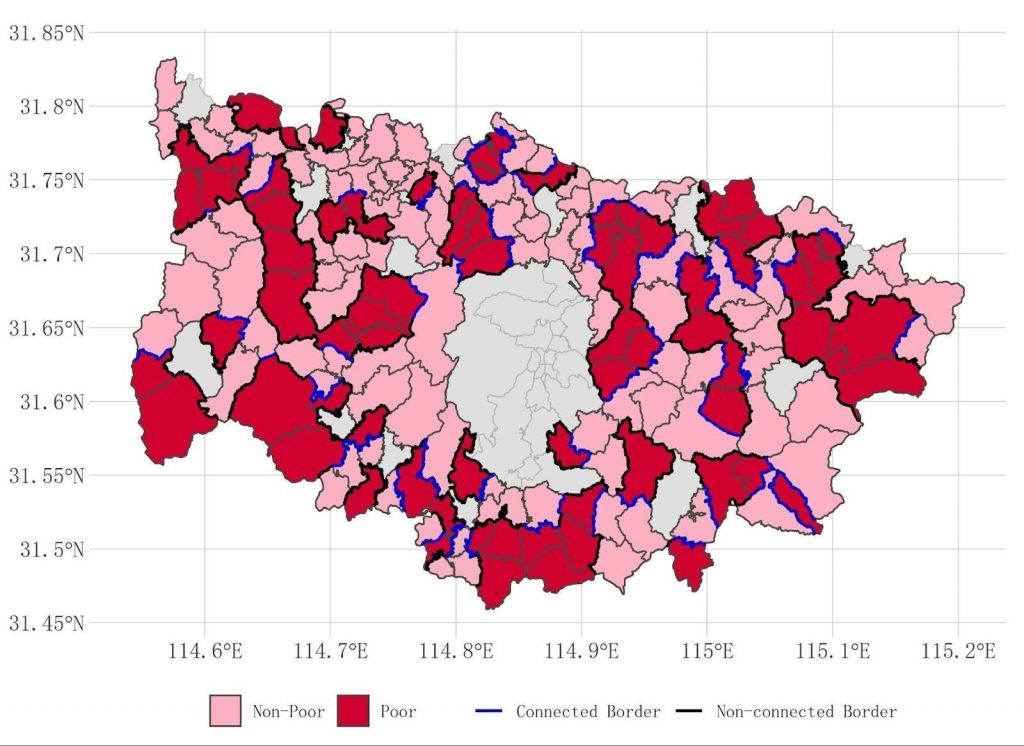


Schoolyards: An Answer to Climate Challenges?
13 December 2022
Unearthing the Roots of Inequality
13 December 2022Low rural income, particularly in developing and emerging countries, is a persistent issue. To address this poverty effectively through public policies, however, we need to better understand its roots.
A great deal of research has been conducted for this purpose and has yielded varied results and competing theories. While some point to an efficient spatial distribution of heterogeneous labour forces – to the advantage of city dwellers – as the source of these inequalities, others suggest that the absence of a formal social safety net in rural areas is the main explanatory factor as it creates an obstacle to the mobility of labour forces to urban areas. They therefore call for the implementation of formal insurance mechanisms. Indeed, without a social security net to help needy families and individuals when faced with adversity, the younger generations tend to stay put to ensure that the most vulnerable members of their families (older generations + children) are looked after. If formal safety nets are improved and become dependable, then the younger generations feel freer to travel to the cities to work and send money back to their families living in rural villages.
With two of his colleagues(1)Fanghua Li, University of New South Wales ; Chenyang Ji, Renmin University of China, Moshe Buchinsky, a researcher at the Department of Economics, shed new light on this issue by exploiting the results of an experimental public policy to reduce poverty conducted in China (Target Poverty Alleviation – TPA) and its assessment in the villages of Xin County where the reform was implemented. The TPA programme not only sought to reduce poverty through the improvement of social security nets in rural China but it would also take the shape of an institutional reform in governance in villages that were deemed ‘poor’.
A Robust Method
Buchinsky & al.’s method consisted of comparing the evolution of the standard of living in ‘poor’ villages (which had undergone this reform) and in ‘not-poor’ villages (that were also part of the TPA programme but were not subject to the institutional reform), using new, detailed administrative data, available at household level, as well as data relating to their exact location.
To ensure the robustness of their results and to ensure that they measured only the effect of the introduction of institutional reform, the researchers were also careful to compare only households residing in neighbouring villages, separated by an administrative border, but interconnected by a road network, one of the villages, the ‘poor’, having benefited from the reform, while the other, the ‘not poor’, did not benefit from the reform. The proximity of the villages and their interconnectedness thus allowed them to guarantee their proximity in terms of culture, geographical conditions, etc., and distinguish local governance as a structural element at the same time.
Map of Villages in Xin County and their Boundaries
Village Governance Under Scrutiny
In China, the political and administrative authorities of villages are made up of elected officials, most frequently among their elites. As there is no fixed term for their mandates, the elected officials most often remain in power indefinitely, this despite the insignificance of the stipend granted them by the State for their services. It is important to note as well that any actions they might undertake within the village are not well controlled by the state or its representatives. In short, their administrative powers and their ability to choose how to distribute resources are quasi-discretionary.
The idea of the reform was therefore to send civil servants from the county (or province) to supervise the villages in order to improve the impartiality and efficiency of a social safety net offered to the villagers, and especially to the poorest. The main supervisor stayed in the village for 5 days and was involved, alongside the elected officials, in all their administrative tasks. In support, the supervisor’s colleagues visited the villages on a regular but impromptu basis. The mission of the latter was to support the supervisor, and also ensure the quality of his work.
Combatting Favouritism
The researchers also examined the family ties between village households and their elected officials. It was important to consider this dimension in the context of institutional reform. Indeed, existing research points to the crucial role of family ties with access to resources, especially in China when it comes to public goods and services. They were able to show that the closer the parental ties were between a household and the elected official (a cousin, an aunt, etc.), the more likely the household was considered to be ‘poor’ and to benefit from an easier access to public resources. The importance and negative impact of this distortion were confirmed by comparing households residing in villages where the governance reform had been implemented and others residing in villages where governance had not been reformed.
Treated villages

Untreated villages

SignificantResults,Especially For the Poorest Households
Three years after the implementation of the reform, it clearly appears to have helped increase the standard of living of poor households and especially the poorest households. In fact, the poorest 10% of households saw their income increase by 10% more than in the villages where the reform had not been carried out. This increase in income is equivalent to 36% of the minimum income (official national threshold)! The very nature of the reform carried out (increased supervision of elected officials) also significantly weakened favouritism: not only did it better target the poorest households but also more equitably the villagers who needed it most.
It is important to note that the income of small, independent farmers, clearly increased as a result of them transitioning to being employees. The vulnerability of a household – defined by the number of children (0 to 14 years old) and of older family members (over 65 years old) – proved to be another criterion of differentiation. More the household was vulnerable, the more the reform had a positive impact.
The Crucial Role of the Reform in the Spatial Redistribution of Labour Forces
Another dimension analysed by Moshe Buchinsky and his team was the impact of the reform on the evolution of the professional trajectories of the most disadvantaged of villagers, i.e. those among the 10% of the poorest villagers and who were also hitherto excluded from the nepotistic system of distribution of social services fostered by the elected officials.
Their study shows that the reform enabled ‘young people’ (16 to 50 years old) to leave their work in the agricultural sector and access paid employment. This phenomenon is particularly marked for young women. Thus, the reform not only helped to ensure a more efficient and equitable formal social safety net by breaking down nepotism (first effect), but it drastically reduced the spatial misallocation of labour (second effect). The younger generations, women and men alike, regained mobility allowing them to find a job outside their county, in an urban environment. There was therefore a more efficient division of labour within households, with younger people emigrating to take better jobs outside the county, while older people take on more responsibilities at home. Thirdly, the temporary migration to the cities of the labour force made it possible to increase the income of rural dwellers and gave the necessary impetus to further reduce poverty in rural China between 2016 and 2020.
Finally, Buchinsky & al. observed that the quality of infrastructure played a significant role in amplifying the effects of the institutional reform. One of the parts of the TPA was to improve road infrastructure in rural areas. Moshe Buchinsky & al. therefore tested to see what impact this might have on the institutional reform and found that in improving access to quality infrastructure – and in particular the proximity of paved roads – the positive effects of the institutional programme on mobility and revenues in the rural villages that benefited from it were multiplied.
References
- Acemoglu, D., Johnson, S., and J. Robinson (2004): “Institutions as the Fundamental Cause of Long-Run Growth,” NBER Working Papers
- Ashraf, N. and O. Bandiera (2017): “Altruistic Capital,” American Economic Review
- Buchinsky, Moshe, F. Li and Z. Liao (2021): “Rural Roads and Rural-Urban Migration: Spatial Regression Discontinuity Evidence from Rural China,” unpublished manuscript.
- Calonico, S., Cattaneo, M., Farrell, M. H., and R. Titiunik (2019): “Regression Disconti- nuity Designs using Covariates,” Review of Economics and Statistics
- Kung J. K-S and T.. Zhou (2021): “Political Elites and Hometown Favoritism in Famine- Stricken China,” Journal of Comparative Economics
- Michalopoulos, S. and E. Papaioannou (2014): “National Institutions and Subnational Development in Africa,” The Quarterly journal of economics
- Munshi, K. and M. Rosenzweig (2016), “Networks and Misallocation: Insurance, Migration, and the Rural-Urban Wage Gap,” American Economic Review
- Tebaldi, E. and B. Elmslie (2008): “Institutions, Innovation And Economic Growth”, Journal of Economic Development
- Xu, G. (2018): “The costs of patronage: Evidence from the British Empire,” American Economic Review
- Young, A (2013): “Inequality, the Urban-Rural Gap, and Migration,” The Quarterly Journal of Economics
Notes
| ↑1 | Fanghua Li, University of New South Wales ; Chenyang Ji, Renmin University of China |
|---|





